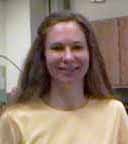
Keuchan Oh
koh2@uiuc.edu, 333-3509

Michael Weaver
weaver@natasha.scs.uiuc.edu, 333-8020

Do Young Kim
dokim2@uiuc.edu, telephone

Stephanie Barnes
sbarnes1@uiuc.edu, 333-3509

 Keuchan Oh koh2@uiuc.edu, 333-3509 |
 Michael Weaver weaver@natasha.scs.uiuc.edu, 333-8020 |
 Do Young Kim dokim2@uiuc.edu, telephone |
 Stephanie Barnes sbarnes1@uiuc.edu, 333-3509 |
Online Discussion Sections
|
Thursday |
Friday |
Sunday |
Monday |
Tuesday |
|
2 PM MW1 |
8 AM DK1 |
7 PM KO4 |
5 PM MW7 |
12 PM DK3 |
|
3 PM MW2 |
9 AM DK2 |
8 PM KO5 |
7 PM KO6 |
1 PM DK4 |
|
5 PM MW3 |
10 AM KO3 |
none |
8 PM KO7 |
6 PM DK5 |
|
6 PM KO1 |
12 PM MW4 |
none |
none |
7 PM DK6 |
|
8 PM KO2 |
2 PM MW5 |
none |
none |
none |
|
none |
3 PM MW6 |
none |
none |
none |
| Monday, 8 AM Room A410 CLSL KO | Monday, 9 AM Room A410 CLSL KO |
| Monday, 2 PM Room 464 RAL MW | Monday, 3 PM Room 464 RAL MW |
| Friday, 4 PM Room 404 CLSL PAS | |
| Date | Lecture/Quiz |
|---|---|
| 8/23 | L1: Electron BookKeeping |
| 8/25 | L2: Chemical bonding |
| 8/28 | L3: Conformations, Stereochemistry |
| 8/30 | Quiz 1 |
| 8/30 | L4: Nucleophilic Substitution |
| 9/1 | L5: Elimination Reactions |
| 9/6 | L6: Reactions of alcohols |
| 9/8 | Quiz 2 |
| 9/8 | L7: Reactions of alkenes and alkynes |
| 9/11 | L8: Spectroscopy, Symmetry, Nuclear spin |
| 9/13 | Exam 1 |
| 9/15 | L9: 13C{1H} NMR spectroscopy |
| 9/17 | Quiz 3 |
| 9/18 | L10: Proton coupled 13C NMR spectroscopy |
| 9/20 | L11: 1H NMR spectroscopy |
| 9/22 | L12: Complex spin-spin coupling in 1H NMR |
| 9/24 | Quiz 4 |
| 9/25 | L13: MRI, IR spectroscopy |
| 9/27 | L14: Bonding in arenes,polyenes,electronic spectroscopy |
| 9/29 | L15: Reactions of arenes |
| 10/1 | Quiz 5 |
| 10/2 | L16: Electrophilic aromatic substitution |
| 10/4 | L17: Organometallic compounds |
| 10/6 | L18: Retrosynthetic analysis, Nucleophilic substitution on carboxylic acid derivatives |
| 10/8 | Quiz 6 |
| 10/9 | L19: Reactions of carboxylic acid derivatives |
| 10/11 | Exam 2 |
| 10/13 | L20: Ester enolates, Claisen condensations |
| 10/16 | L21: Mixed Claisen condensations, related C-C bond forming reactions |
| 10/18 | Quiz 7 |
| 10/18 | L22: Organo-sulfur compounds, Reactions of sulfur compounds |
| 10/20 | L23: Sulfur-containing amino acids, Molecular recognition |
| 10/23 | L24: Amines, Synthesis of amines |
| 10/25 | Quiz 8 |
| 10/25 | L25: Amines as nucleophiles, Amine natural products |
| 10/27 | L26: E2 reactions of ammonium compounds, Diazonium salts, Nitrosation reactions |
| 10/30 | L27: Nucleophilic aromatic substitution |
| 11/1 | Quiz 9 |
| 11/1 | L28: Phenols, Synthesis of phenols |
| 11/3 | L29: Aspirin, Phenoxide reactions, Oxidation of phenols |
| 11/6 | L30: Synthesis Problems |
| 11/8 | Quiz 10 |
| 11/8 | Exam 3 |
| 11/10 | L31: Food, Sugars: conformation and stereochemistry |
| 11/13 | L32: Reactions of sugars |
| 11/15 | L33: Polysaccharides |
| 11/17 | Quiz 11 |
| 11/17 | L34: Glucose metabolism, Fatty acid biosynthesis |
| 11/20 | L35: Acetate-derived natural products |
| 11/22 | L36: Amino acids |
| 11/24 | Quiz 11 |
| 11/24 | L37: Synthesis of peptides |
| 12/4 | L38: Analysis of Protein structure |
| 12/6 | Exam 4 |
| 12/8 | L39: Metalloenzymes |
| 11/8 | Quiz 12 |